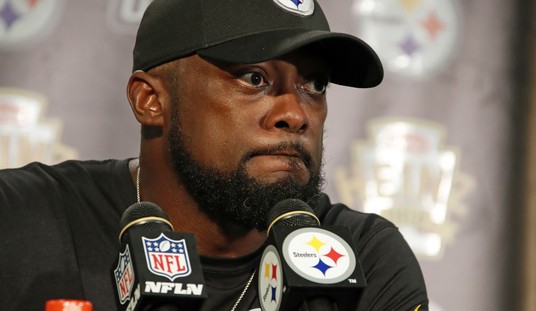In 2006, Boston University professor (and PJM contributor) Richard Landes brought you “Pallywood,” which illustrated how Palestinians are experts at faking news on a Hollywood-style assembly line basis for a gullible western media that wants to believe:
[jwplayer config=”pjmedia_eddriscoll” mediaid=”63581″]
Later that same year, Reuters was busted for its heavily Photoshopped image of Beirut under attack, in which Reuters’ Mideast stringer and ace Photoshop user Adnan Hajj was busted for criminal image assault with a Photoshop clone tool. An embarrassed Reuters grudgingly issued a “Picture Kill” update to the papers that rely on the wire service for its content:
And over the past decade, there have been numerous other examples of bad Photoshoppery from the Mideast region; sometimes from freelance stringers such as Hajj, sometimes from Mideast government propaganda shops.
Today, the ExtremeTech.com Website explores how, in their estimation, “the 2013 World Press Photo of the Year was faked with Photoshop:”
The photo, dubbed Gaza Burial, was purportedly captured on November 20, 2012 by Paul Hansen. Hansen was in Gaza City when Israeli forces retaliated in response to rocket fire from Palestinian rocket fire. The photo shows two of the casualties of the Israeli attack, carried to their funeral by their uncles. Now, the event itself isn’t a fake — there are lots of other photos online that show the children being carried through the streets of Gaza — but the photo itself is almost certainly a composite of three different photos, with various limbs spliced together from each of the images, and then further manipulation to illuminate the mourners’ faces.
Just looking at the photo, you can tell there’s something off. The perspective of the buildings looks weird; it seems like there’s so much unsharp mask or a similar Photoshop filter on the bald men in the front that he looks painted in, and the focus seems off on the other men in the photo:

After some extensive and (given the name of the Website) appropriately technical background on how the photo was assembled, ExtremeTech notes:
Basically, Hansen took a series of photos — and then later, realizing that his most dramatically situated photo was too dark and shadowy, decided to splice a bunch of images together and apply a liberal amount of dodging (brightening) to the shadowy regions. For what it’s worth, Hansen claims that the light in the alley was natural — and to be fair, sometimes magical lighting does occur. I think most of you will agree, though, that the photo simply feels fake — there’s just something about the lighting that sets off a warning alarm in your brain. As for why World Press Photo didn’t forensically analyze the photo using freely available, advanced, accurate analysis tools such as FourMatch or FotoForensics… who knows.
Oh, I forgot to mention the best bit: Hansen was meant to provide the Raw file for his winning photo, as proof that he didn’t significantly modify the final image — but so far, he hasn’t.
Because, as we mentioned at the top of the post, so many leftwing western news agencies want to believe. But then, modern wars — and especially postmodern wars — are fought not just on the battlefield, but inside the TV screen and Web monitor as well.
Update: Speaking of postmodern, ABC News ventures into the murky realm of “even better than the real thing” at the conclusion of their analysis of Hansen’s controversial photograph:
Ironically, the magic of Photoshop makes it possible to edit photos to look as if they had not been edited with Photoshop. Palmisano believes that in the future photographers will increasingly emphasize authenticity by using post-processing to make their images look less perfect than if they had been taken with a digital camera. The worse a spectacular photo looks, the more genuine it feels. [Ironically, this is the sort of thing that Hollywood CGI artists have been doing for the last 20 years. They frequently add simulated lens flares, camera shakes, artificial smoke elements and other techniques all designed to deliberately “dirty up” a digital special effects shot, to add verisimilitude. — Ed]
When Paul Hansen took his picture in the Gaza Strip, another photographer was nearby. His photo must have been taken in almost the same location and at almost the same time, but it is an ordinary-looking news photo. It lacks the perfect cropping, the magical light and the debate over authenticity, but it also lacks the resonance and sympathy of Hansen’s image.
Hansen says that he wants to achieve good things with his work. Perhaps an ordinary news photo wouldn’t have been enough for that.
So the House of Stephanopoulos is entering further into “fake but accurate” territory? I thought Dan Rather and the New York Times had the lock on that defense.
Here’s an interesting Der Spiegel video (in German, but with English subtitles) with some further thoughts on how the above photo was manipulated:
[jwplayer config=”pjmedia_eddriscoll” mediaid=”63596″ width=”590″ height=”360″]
And in a 2011 blog post titled “Is This Photo Ethical?” A photographer examines a 2010 image taken by Hanson of young girl shot by police after the Haiti earthquake. While Photoshop trickery isn’t discussed, photographer Eric Kim writes:
Looking at the image [of the young dead Haitian girl], it is a very emotional image that does bring great amounts of awareness to this horrible issue. However when looking at the photo below shot by photographer Nathan Weber, I feel that the story changes. Rather than having the image being a positive political tool, it looks like the photographers below are more like vultures– all trying to get the best version of the image and exploiting this horrible crime.
Yes, it’s always disconcerting to see the MSM’s sausage being made.











Join the conversation as a VIP Member